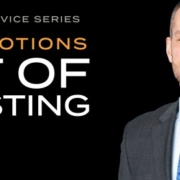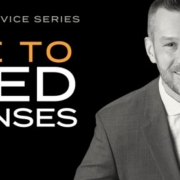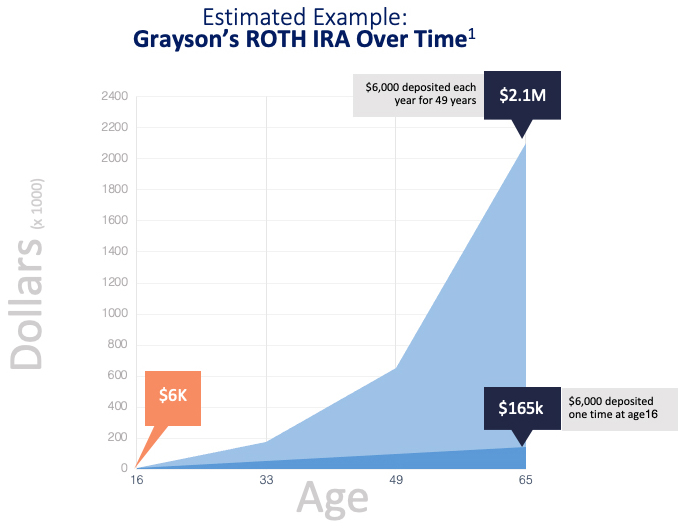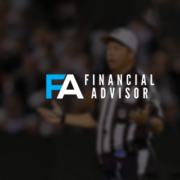Are You Getting What You Pay For?
How to Ask if You are Building Your Wealth or Someone Else’s
Some of the most simple and common adages in life directly apply to the most complex and lucrative aspects of business and building wealth. A penny saved is a penny earned, is as clear as wisdom can get, but what if you are referring to hundreds of thousands of pennies and not just one? The amount of money that the clients of financial advisors unknowingly spend on fees, commissions, and other undisclosed costs add up to significantly more than just a few pennies on the dollar.
The key to saving all these pennies and compounding them up to millions of dollars over time is asking the right questions. If you want to know how much the financial advice you get costs, you must know and verify the following:
- What are the fees I am paying directly to my advisor (Advisory or Wrap Fee)?
- What fees am I paying to the investment managers my advisor hires?
- Has my advisor made a commission on any of the products I currently have, and can they continue to make commissions going forward on any products?
- Does my advisor have any “soft-dollar” (advisor benefits in return for using products or services) arrangements with custodians or investment managers?
- Can I have a copy of the advisory firm’s fee schedule and is my fee in line with the firm’s fee schedule?
- What do the additional services my advisor provides cost me or are any of them included in my advisory fee?
- What is my portfolio performance “net of all fees and costs”?
- Does my advisor accept gifts or any incentives from asset managers, insurance companies, or any service provider to entice them to select offerings from those companies?
Additionally, on any advisor’s website, you should be able to get a copy of the Form CRS (Customer Relationship Summary) which outlines, among other important details and information, exactly how the advisor is compensated and whether they are fee-only, commission based, or a combination of both. This form will also disclose any conflicts of interest, legal or disciplinary history, and other costs related to services provided by that advisor.
A handful of simple direct questions and some additional research time can provide you with a wealth of knowledge, and most importantly they expose how efficiently you are building your wealth versus contributing to the wealth of someone else. Every dollar that you save and invest should pay you back first, foremost, and always as efficiently as possible. The fees, commissions, add-on costs, and conflicts that pile up in portfolios can be staggering. Conflicts can be especially troublesome when your advisor is incentivized to select certain investments for you instead of finding the best solution for your need at the best possible price. The collective impact of all these factors that erode portfolio performance is called “scrape” and it can drag any portfolio growth to near stagnation or worse.
The erosive effect that fees and costs have on portfolios emphasizes how vitally important the final question from above regarding net performance is to investors evaluating their advisors. The total amount that you pay for advice is independent of the returns received, and therefore “returns net of fees” truly shows you where you stand. As an example, three separate firms offer different fee structures and descriptions:
- Firm A charges 50 basis points (one-half of 1%) annually on assets under management, no other fees/commissions, and produces a 6.0% gross portfolio return for clients, while touting how they are simple, efficient, inexpensive, and do not waste client money on needless services to get their results.
- Firm B charges a 100 basis points (1%) on assets under management, no other fees/commissions, takes no soft dollars from managers, and produces a 9.0% gross portfolio return for clients, while advertising client experience, few conflicts of interest, an extensive service package beyond financial advice, and continuing business and financial education.
- Firm C charges 50 basis points, 8% commission on annuities, 10% commission on private investments, receives soft dollar benefits from their managers, and additional fees above their base fee on proprietary investments, and produces a 10.0% gross portfolio return for clients, while highlighting how great they are at driving high returns and making money for clients.
The most client performance-centered option from this group is Firm B, who has eliminated incentivized advice and scrape, and focused their attention and service on their clients, while driving the best “net of fees” return for those clients. Firm C has produced impressive results for a low base fee, but they are riddled with conflicts that may not put clients first, and their commissions and proprietary products incentivize them to put firm before client to make more money above their base fee. The actual net return from Firm C will be reduced dramatically with hidden costs and fees. Firm A charges the least overall and looks efficient, but their net results lag the others, while offering no additional services to clients that justify accepting a comparatively lower overall return. This simplified example illustrates that how much an advisor costs is not directly correlated with what advisor is best. A more real-world scenario would require more depth in the overall analysis of these firms, but the concept of this comparison is the importance of evaluating cost versus overall reward. This is also true for money managers, private investments, insurance products, and any proprietary investment vehicles that are engaged or recommended by your advisors. It is equally important to understand the fee structures of all these providers, along with your advisor, so you know exactly what the collective cost is for your services and overall return.
The willingness to pursue this conversation with your advisor is crucial because building wealth requires more than just assets under management and a good strategy. It requires discipline, efficiency, and understanding. The discipline to follow the strategy that has been designed and implemented by your advisor. The streamlined and cost-effective application of your assets towards implementing that strategy, the understanding of how to adjust over time, and exactly what you spend on advice versus what gets invested back into your portfolio.
The expectation that assets are efficiently invested should be universal. Smaller investors often feel they lack the financial clout to demand favorable fee structures from their advisors. Business owners, athletes, and the ultra-wealthy are as equally susceptible as anyone to excessive investment costs. The asset bases of the wealthy fluctuate substantially through different pay frequencies and liquidity events. This, along with hectic lifestyles and an aversion to appearing financially uninformed, create ideal environments for advisors and managers to not disclose and diminish the visibility of the totality of advisory costs associated with investment products and vehicles.
Each investor, no matter the size of your asset base or portfolio complexity, should understand the fees associated with your relationship, how their advisor is compensated, and what, if any, conflicts of interest exist within their advisory relationship. Armed with the questions listed above and the ability to hold all advisors accountable to their answers, any investor can harness the power that comes from the answer to one more adage, are you getting what you pay for?
Verdence Capital Advisors is a fully independent Investment Advisor, and if you need help getting answers to the questions proposed in this article or verifying the accuracy of the answers you are given, please do not hesitate to contact our experienced team of advisors and industry professionals.
Important Disclosures
The information contained herein is educational in nature and not designed to be taken as advice or a recommendation for any specific action, product, strategy, plan, or other purpose in any jurisdiction. You should not assume that any discussion or information contained in this newsletter serves as the receipt of, or as a substitute for, personalized advice from Verdence Capital Advisors and/or its affiliates. To the extent that a reader has any questions regarding the applicability to his/her individual situation of any specific issue discussed, he/she is encouraged to consult with the professional advisor of his/her choosing. Verdence Capital Advisors is neither a law firm nor a certified public accounting firm and no portion of the newsletter content should be construed as legal or accounting advice. A copy of the Verdence Capital Advisors current written disclosure statement discussing our advisory services and fees is available for review upon request.











